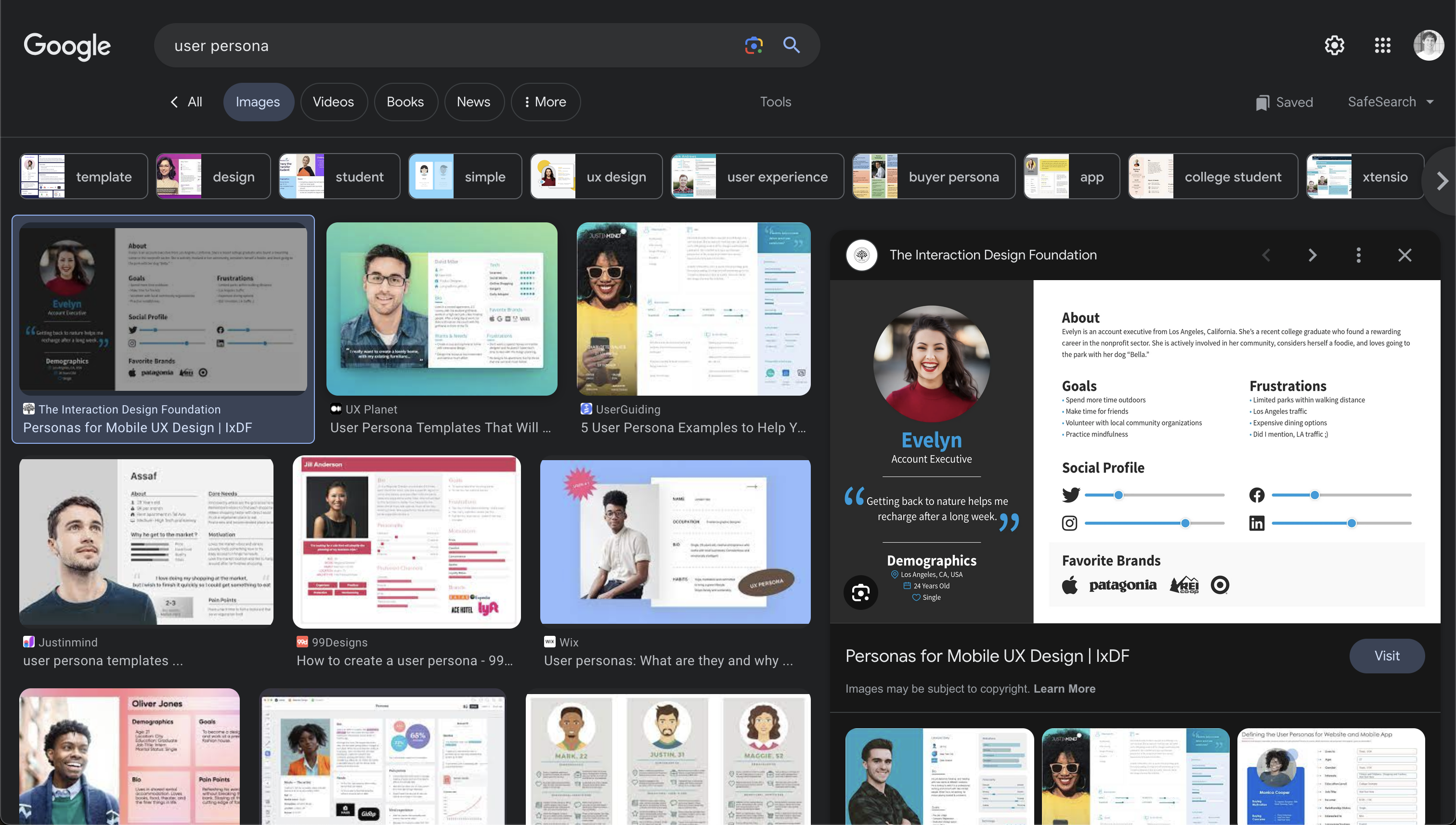Great stories start with great characters.
What are the elements of characters?
Well, they have both outward attributes and inner values. Characters also have a story; they start with a problem or conflict, go on a journey, and are transformed in the end.
This last part is vital. Without transformation, the characters become hollow and lifeless.
In product design, the characters are our users.
And these users are where we should start when building great products.
We should dive into their stories: their problem, journey, and, ultimately, how the product transforms them.
My tool of choice for doing this is the user persona, but with a narrative spin.

Building user personas
Personas are fictional representations of users.
They function as a communication tool to help teams make better product decisions. Companies often make a few different personas, each representing a user with a particular set of behavioral characteristics.
Especially when they capture the user’s journey and transformation, personas can become a Schelling point for scaling product teams. Abstract discussions about users become grounded in a persona.
Where’s the story?
If you search for “user persona,” you’ll get plenty of samples and tutorials. These are a good start, but many personas feel lifeless.

Why?
Well…
Where’s the story?
Personas should be useful and memorable. To do this, they should show a believable human and tell a believable story. They should always feel as though they could be real.
Here are some questions to ask while creating a persona to make it more lifelike:
- How would you describe the user’s outward attributes?
- How would you describe their character/personality?
- What about their relationships? Work? Philosophy of life?
- What are their needs? What pains them?
- How do they use the product? What’s the journey?
- How does using the product transform their behavior? Goals? Relationships?

Before and After
Consider the following persona for an AI automation product.
Name: Ethan Sawyer
Demographics
Ethan, 37, is a seasoned private equity investor based in Richmond, Virginia. Studied polisci at University of Delaware, and has run a successful podcast, worked in consultancy role in China, and spent several years at Goldman Sachs in New York. Married to Laura and has one 7-year old daughter, who’s a math whiz.
His business philosophy, captured by the sign above his computer, “Who, not how”, underscores his belief in the power of delegating tasks to the right people, rather than getting mired in the process.
Pain Points and Needs
Ethan recently acquired an industrial hiring company operating mainly in the Richmond area. This company has traditionally relied on word-of-mouth and well-established relationships to identify potential employees and client-employers. The CEO is a good operator but struggles with new strategic initiatives.
Their current process of manually scouting new employers on job platforms like Indeed is laborious and inefficient. The company’s lack of technological infrastructure capable of automating these tasks amplifies Ethan’s desire for a system that can effectively and efficiently identify potential client-employers.
He also senses that AI might be big for his portfolio companies, but is uncertain about how best to integrate it.

Commentary: This isn’t a bad start. But it requires anyone who reads the persona to have to imagine what happens to Ethan as he uses the product.
Let’s add a final section to cover Ethan’s transformation.
Transformation
Analytical Engine’s AI agents become Ethan’s “who” as they diligently search job sites, detect hiring companies, and then draft custom emails to be sent to hiring managers. This drastically reduces the time and effort required to identify potential client-employers. Ethan comps the immediate impact of AE as hiring two strong new employees.
Not only does AE expand the hiring company’s client-employer base, improving revenue and operational efficiency, it also lights Ethan’s mind ablaze with ideas for integrating AE with other portfolio companies.
Ethan now has more time to spend with his family and finding new opportunities.

In adding this last section, we can connect Ethan’s values to the future that he’s able to create for his family through using the product.
When an engineer or product designer is considering a feature, they may think of how to name elements in a way that compares favorably with the employees that Ethan uses to compare the product to.
Bringing It All Together
User transformation is the heart of the user story, yet many companies skip this step completely when creating personas or delegate it to another tool like a storyboard or user journey map. This is a mistake.
Your product starts with its characters – your users.
Make them real by giving them a story. Show their problem, their journey, and how your products transform them.